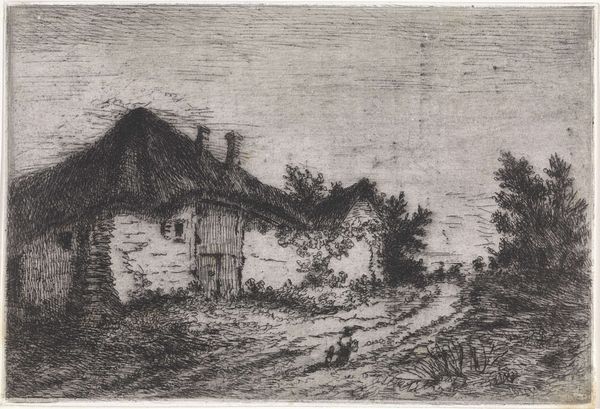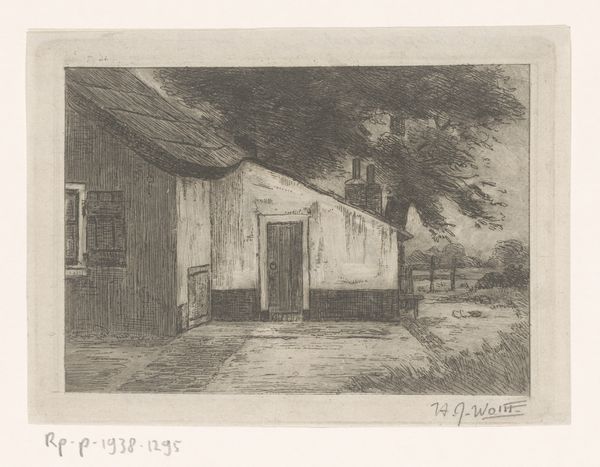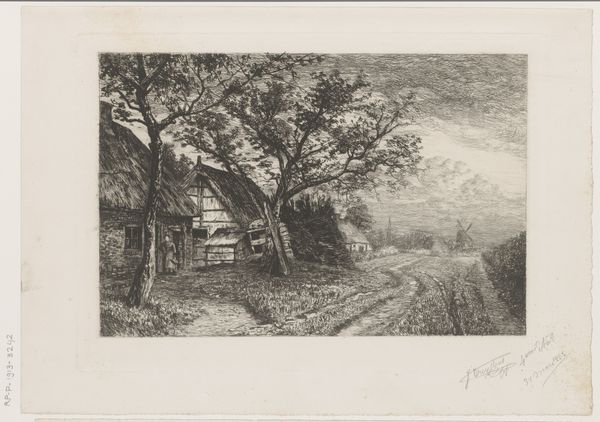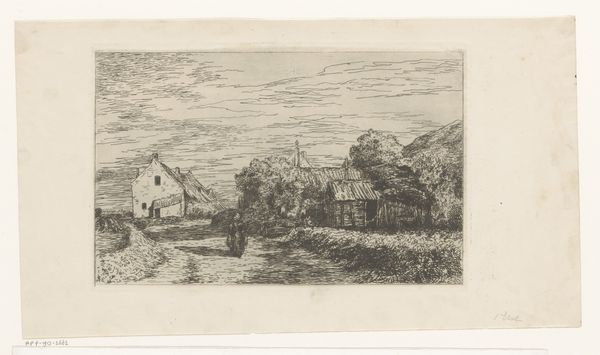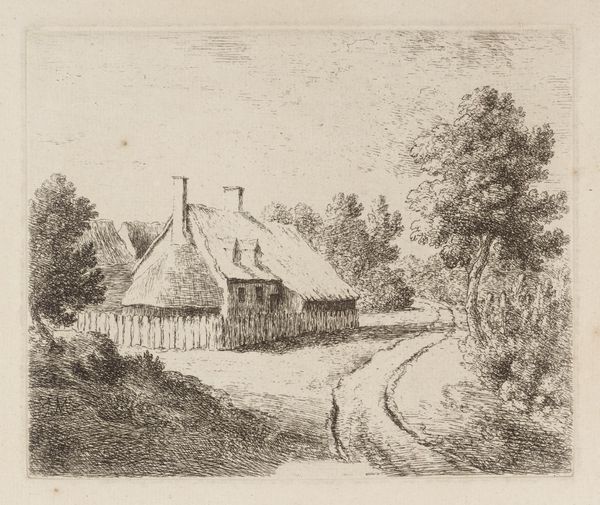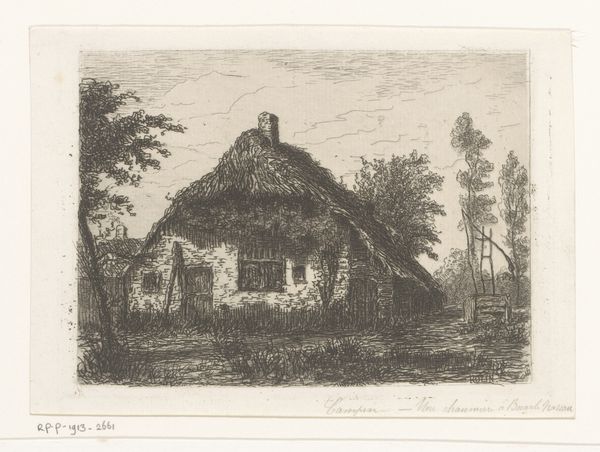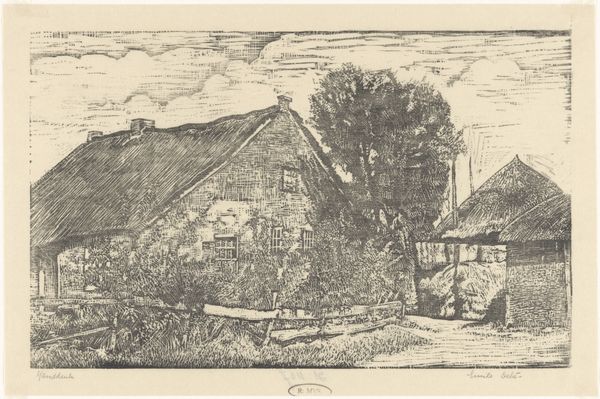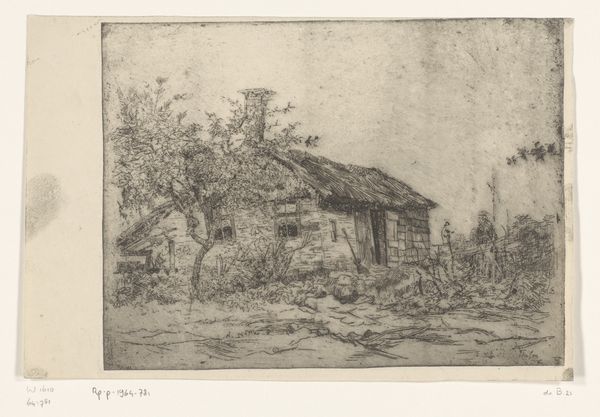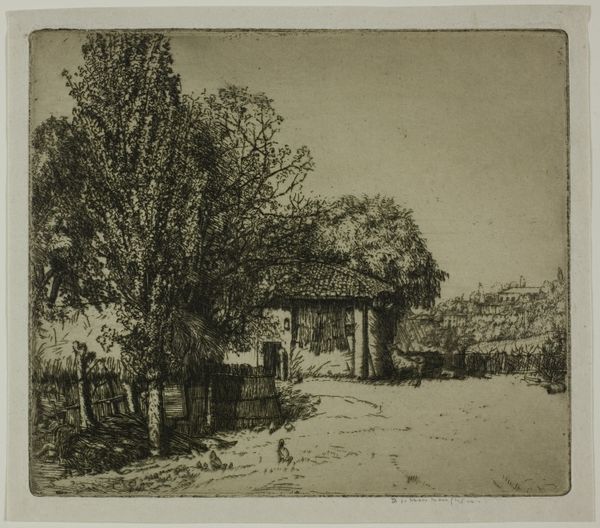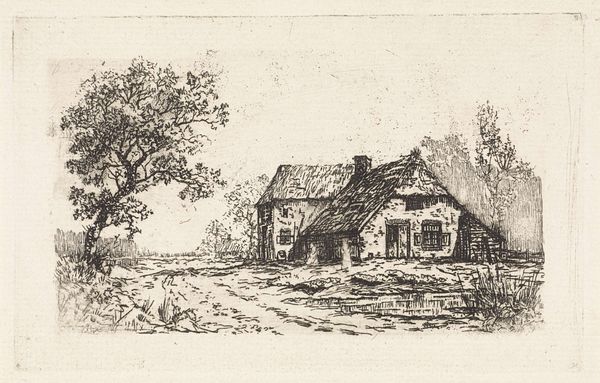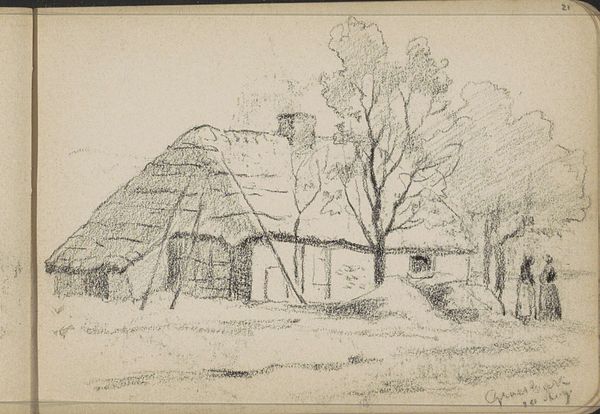
print, etching
# print
#
etching
#
landscape
#
etching
Dimensions: height 133 mm, width 95 mm
Copyright: Rijks Museum: Open Domain
Curator: This etching by Jacoba de Graaff, titled "Huizen in Leende," and thought to be created between 1867 and 1911, depicts a rather humble scene. It is currently housed here at the Rijksmuseum. Editor: My first impression is the stillness, and yet… melancholy. The muted tones enhance the quiet, perhaps lonely, atmosphere of this rural landscape. It's intimate and small. Curator: The small scale is typical for etchings, influencing both its intimacy and its accessibility. Prints like these allowed art to circulate more freely among a broader public. Editor: What strikes me are the details— the thatched roof seems to weigh heavily on the house, symbolic perhaps of the burdens of rural life. And the row of slender trees – they almost seem like protective figures, or even watchmen. Curator: I think it's interesting to contextualize this imagery. Late 19th century Dutch art was wrestling with shifting social structures. The rural was starting to be perceived, and sentimentalized, as the heart of Dutch identity in a rapidly modernizing world. This scene becomes almost a relic, or a conscious return. Editor: It speaks to the enduring appeal of a simpler life. Even now, centuries later, it feels almost idyllic, even with that pervasive stillness. You see similar images, thatched roofs, for instance, used on packaging or for brands related to traditions. There’s some collective imagery we attach to these houses. Curator: I think this is right; De Graaff subtly participates in the creation of an ideal of a sort, subtly pushing back against broader industrialized aesthetics. Editor: Reflecting upon this, I am still left with the symbolism of this lone house within nature’s protective arms. It prompts reflections on human shelter in the immensity of the landscape. Curator: Indeed, and seen within its historical and cultural framework, the work becomes an illustration of how visual forms crystallize cultural value judgments.
Comments
No comments
Be the first to comment and join the conversation on the ultimate creative platform.
